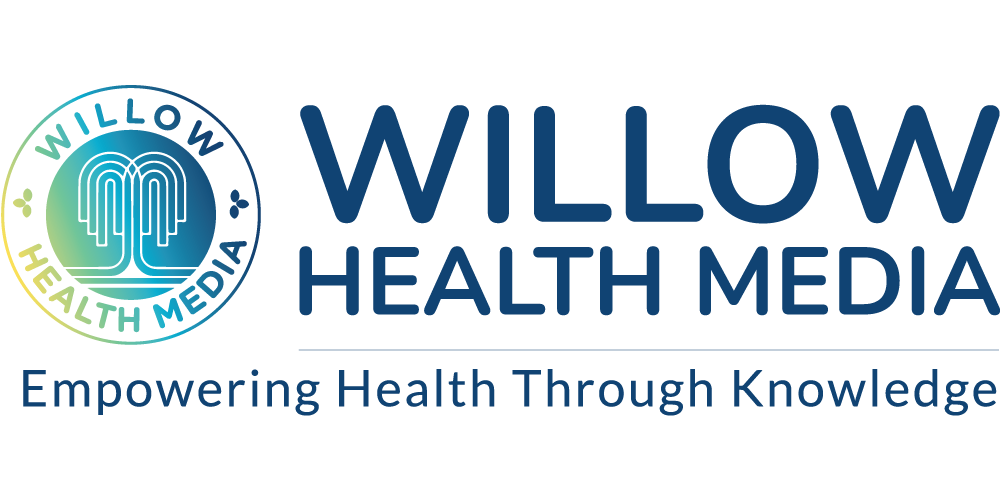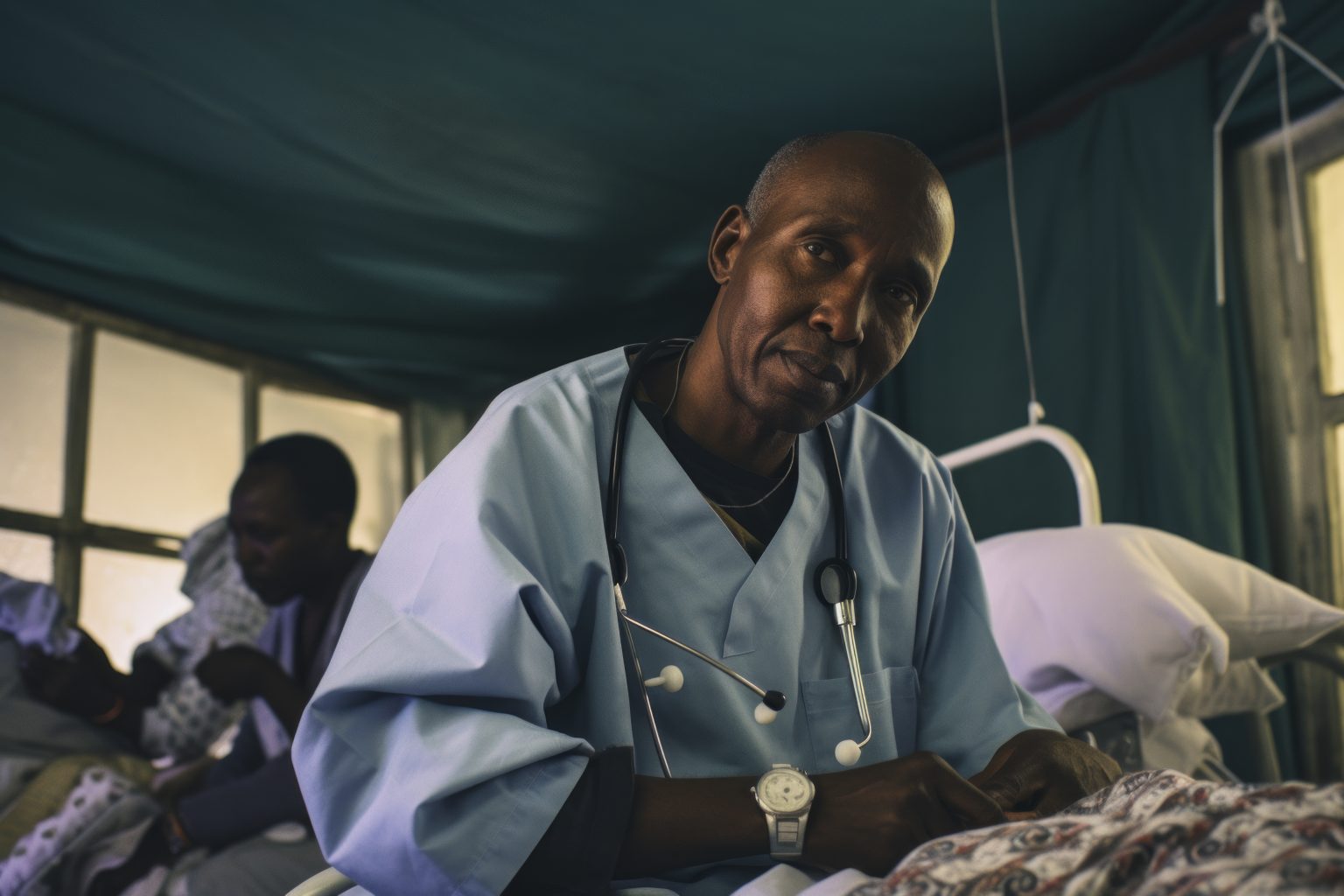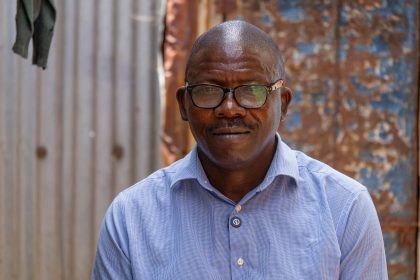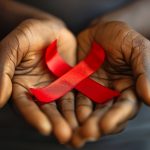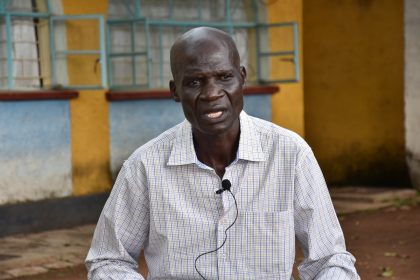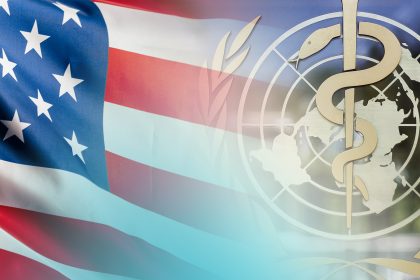For millions of Kenyans, US donor aid wasn’t just funding—it was survival for health programmes and tens of thousands of jobs. Now, as the tap runs dry, the real cost emerges: empty clinics, abandoned patients, and a health system gasping for air. The question isn’t just who will pay—but how the country will navigate the treacherous health financing waters.
For decades, Kenya’s health sector has significantly relied on assistance from the United States, forming a vital lifeline for millions of Kenyans. The lion’s share of this support has been directed toward the health sector, with US funding playing a crucial role in combating diseases such as HIV/AIDS, tuberculosis (TB), and malaria, while also strengthening maternal and child health services.
But the sudden withdrawal of funding left Kenya’s healthcare system in critical condition: HIV programmes, once a global success story, now risk treatment interruptions for 1.3 million people on life-saving ARVs. Tuberculosis control, which saw deaths drop by 70 percent since 2010, faces backsliding as $10.7 billion in pending TB funds vanish. Malaria initiatives—including vital bed net distributions—are being rolled back just as resistance to first-line treatments emerges.
The ripple effects are equally devastating: Maternal health clinics report medicine shortages amid Kenya’s worst maternal mortality crisis in decades. Family planning programmes, which helped contraceptive use reach 57 percent, now confront stockouts in rural areas. Nutrition interventions for malnourished children are collapsing in arid regions where stunting rates exceed 30 percent. Even health data systems—the backbone of epidemic response—are faltering as technical support evaporates.
Patients choose between buying antiretrovirals or school fees. Clinics turn away TB cases due to testing kit shortages. This isn’t just a funding gap—it’s the unravelling of two decades of progress. Without emergency intervention, Kenya faces a grim new era where treatable diseases again become death sentences. Indeed, the exit of US health funding in critical areas has become Kenya’s health emergency.
And the human toll transcends statistics: Community health workers, once salaried by US grants have lost their jobs alongside professionals in global development, sustainability, and humanitarian work. In Kenya alone, more than 40,000 USAID-supported employees in PEPFAR and CDC health projects were affected.
However, this year saw policy shifts and funding freezes under President Donald Trump which threatens to undermine this lifeline and jeopardize the progress Kenya has made over the years.
OdipoDev and Willow Health conducted an in-depth analysis and spoke with frontline health workers, patients who have benefited from US assistance and medical experts to understand how funding gaps are emerging months into the aid freeze. We dissected the $8.3 billion in US health support delivered to Kenya from 2001 to 2024, and found a sustained investment routed through 236 partners and 1,016 programs in 10 health areas—contributions that have shaped healthcare delivery for decades.
Despite the positive impact of US assistance, Kenya’s health sector continues to face resource constraints. The Kenyan government’s allocation of only four percent of its national budget to health in 2024, falls significantly short of the 15 percent target recommended by the Abuja Declaration in 2001. This chronic underfunding, combined with the recent US funding freeze, has created a substantial gap that threatens the delivery of essential health services
How US Donor Dollars Closed Critical Health Gaps
Since 2000, the total amount disbursed for health is US$ 8.3 billion. Support for HIV accounts for 80 percent, Malaria (5.99 percent), Family Planning (3.15 percent), Nutrition (2.4 percent), Maternal and Childcare (2 percent), General Health (1.71 percent), Water Supply and Sanitation (1.68 percent), Pandemic Influenza and Other Emerging Threats (PIOET) (1.58 percent), Tuberculosis (0.89 percent), Other Public Health Threats (0.21 percent)
HIV/AIDS took Lion’s Share of US Health Funding
Since 2001 the US has released over US$ 6.6 billion to fund over 403 different activities related to tackling HIV/AIDs in the country. Working with the 166 agencies across government, NGOs, enterprises, government, church and faith based, Universities and other forms of partners. The funds are targeted at prevention and support for those living and affected by the disease US kicked off the support by prioritizing partnership with NGOs and faith based organizations. In 2013 it increased support for the government but reduced the support after 2020, prioritizing enterprises, networks and faith-based.
Burden lifted for Orphans, Vulnerable Children affected by HIV/AIDs
Most of the activities were executed under The President’s Emergency Plan For AIDS Relief (PEPFAR) which provided support on Anti-Retroviral Therapy (ART), testing and counseling, HIV prevention and care for orphans and vulnerable children. Edna, one of the earliest recipients of PEPFAR-funded ART in Kenya, shared her story 20 years later. The treatment helped her give birth to an HIV-free child and empowered her to mentor others—highlighting the far-reaching impact of the intervention.
In 2023 alone, PEPFAR provided life-saving ART for 1,299,989 persons, HIV testing and counseling (HTC) for 3,088,687 Kenyans, cared for 608,090 Orphans and Vulnerable Children and provided jobs for about 43,000 health care work staff across Kenya
Pending HIV/AIDs Projects Could Increase Disease Burden
At the end of fiscal year 2024, just months before President Trump’s freeze, there was a total of US$174,170,275 million of undisbursed funds for HIV/AIDs programs. This cut comes with a huge risk of disrupting services, potentially increasing disease burden. For instance, it could interrupt ART for over 1.3 million Kenyans, straining the healthcare system.
Then there were the health advocates who lost their jobs. Like Joseph Okutoyi, a former counselor at Liverpool VCT and a father of five, now lives with four of his children in Sinai, Viwandani Ward, Makadara Sub-County, Nairobi. His wife and one daughter relocated upcountry after the financial strain became unbearable.
“I lived in Umoja, but when things started changing, I realized I needed to move to a cheaper house,” said Okutoyi. “I have school fees and other responsibilities—I had to adjust.”
His wife advised him to relocate before the situation worsened—a decision he now appreciates. “Some of us have loans and projects at a standstill. Life is devastating because we don’t have any other avenue,” says Okutoyi, who previously worked with MSF, providing crucial counseling services in homes—especially in underserved areas like Kibera slums as “Some clients couldn’t come to the facility because they lacked transport or were too busy with survival struggles,” he explained. “But when someone stops taking their medication, their immunity drops, making them vulnerable to infections.”
Despite applying for jobs and considering starting his own counseling service, Okutoyi remains unemployed, struggling to make ends meet.
Tuberculosis: US Aid Helps Kenya Fight a Double Epidemic
Before the advent of the human immunodeficiency virus (HIV) in 1990, notification rates of cases of tuberculosis (TB) in Kenya were falling steadily at about four percent per year. The HIV epidemic reversed this trend, and by the middle of the 1990s the case notification rate was increasing at 15 percent per year
TB became a major opportunistic infection, leading to a six-fold increase in TB case notifications between 1990 and the late 2000s. HIV/TB co-infection became a significant public health challenge. According to the National TB Program’s 2022 annual report, Kenya records an estimated 133,000 tuberculosis cases annually.
With support, TB-related deaths dropped significantly – from 75,000 in 2010 to 23,000 in 2023. However, the recent withdrawal of this support now threatens those hard-won gains and risks shifting the burden back onto families caring for TB patients.
How the Support Alleviated the Tuberculosis Burden
The biggest program, TB ARC II disbursed US $25.5 million from 2019 to 2024, implementing active case finding in 47 counties, identifying thousands of cases, and providing free treatment targeted at reducing the incidence, and TB related morbidity, and mortality.
Pending Tuberculosis Programs
At the end of 2024, there were pending commitments of US $10.7 billion. This represents a huge loss of critical support for TB patients in Kenya including health promoters like Sheringham Elisha, a community health promoter and TB linkage assistant in Mathare North, who lost his job after the funding freeze.
He recalls how “It was a shock. I depended on that job for my family’s upkeep” and continued volunteering at the health centre while seeking counseling to cope with the stress. After two months, he was rehired—but only on a three-month contract ending this September. “After that, I don’t know what happens next,” he said, adding after the freeze, health facilities struggled to meet patient needs due to staff shortages.
Malaria is the second most supported by US Funding
Malaria remains a major public health problem in Kenya and accounts for an estimated 13 percent to 15 percent of outpatient consultations with approximately 70 percent of the population is at risk for malaria
The Malaria sector is the second most supported by the US government. From 2001-2024, U.S. assistance for the top 20 malaria activities in Kenya totaled about $497 million. Recent years (2022-2024) saw continued support of $27-30 million annually before the freeze
A cornerstone of the US-supported malaria programs in Kenya has been the widespread distribution of insecticide-treated nets (ITNs). PMI has spearheaded the provision of these essential tools, ensuring they reach vulnerable populations through both large-scale campaigns and integration into routine health services like antenatal care and immunization programs.
The programs also supported access to prompt and effective case management, including diagnostics and treatment.
Maternal and Child Health: Saving Mothers and Babies
Kenya’s maternal mortality rate remains critically high, ranking it fourth in Africa. According to UNICEF, there are 510 maternal deaths per 100,000 live births and more recent reports indicate this number may have worsened to 594. Neonatal mortality also presents a significant challenge, with 22 deaths per 1,000 live births
Analysis of the dataset shows that total US funding for maternal and child health in Kenya from 2008 to 2024 is $165 million. Funding increased sharply from $6.7 million in 2014 to a peak of $24 million in 2019, before plummeting during the Covid-19 pandemic. The support had started to rise again before the freeze.
The freeze is happening at the time that the Kenyan government has cut funding for free maternity services by half, from 4 billion to 2 billion Kenyan shillings
Josephine Barasa worked with USAID from 2016 until the freeze in January 2025. Starting as a mentor mother at Kangemi Health Centre, she later became a gender-based violence (GBV) champion. “I chose to work with young women because many teen mums in our community needed guidance after dropping out of school,” she said.
She lost her advocacy job when funding stopped, but Barasa still volunteers, though her work is now more difficult considering “Many survivors are distressed because they’re used to immediate support, but now even airtime is a challenge. “Barasa encourages others who lost jobs to seek psychosocial support, believing this is a temporary setback and “We’re hoping another donor will step in.”
Family Planning and Reproductive Health: Empowering Women to Choose Their Future
Family Planning and Reproductive Health (FPRH) services are critical to Kenya’s development, helping reduce maternal mortality, prevent teenage pregnancies, and support economic stability by enabling women to plan their families. Modern contraceptive use among married women in Kenya rose to 57 percent in 2022, but one in five women still has an unmet need for family planning according to Kenya Demographic and Health Survey, 2022.
Support for this sector kicked off in 2008, peaking in 2015 with total support reaching $261.9 Million by the end of 2024
Nutrition services were to improve food security, address acute malnutrition
About a quarter of Kenyan children under five years suffer from stunting due to chronic malnutrition, while four percent experience wasting due to acute malnutrition. In arid regions like Turkana, stunting rates exceed 30 percent according to UNICEF.
NHPlus, a program started in 2016 which provided $9.7 Million aimed at increasing access to quality nutrition services, improve food and nutrition security, and provide support to address severe acute malnutrition. NHPplus provided and distributed fortified blended foods and ready-to-use therapeutic foods to address severe acute malnutrition.
One of the leading programs has been the McGovern-Dole, a program that worked to reduce hunger and improve literacy and primary education, especially for girls by providing school meals, teacher training and related support leading to better school enrollment, attendance and academic performance.
APHIA Plus Northern Arid Lands (NAL) IMARISHA program integrates nutrition interventions with other health initiatives in the Northern Arid Lands, which often suffer from malnutrition.
Th US health funding assistance has also extended to strengthening Kenya’s health information systems. Initiatives like the National Health Management Information System (AfyaInfo) and the District Health Information System (DHIS2) have been supported, improving data collection, analysis, and decision-making for key health programs. The HealthIT project, for example, provides technical support to ensure the sustainability of these systems.
What’s next with the heath care budget gap at over Ksh40 billion?
Given Kenya’s reliance on a few major donors for its health aid, the substantial cut from the US could have a disproportionately large impact on its ability to finance and implement essential health programs. The loss of a large number of health workers further weakens the system’s capacity to respond effectively.
President Trump’s decision to freeze and subsequently cut foreign aid has abruptly interrupted this vital support, placing decades of progress at risk and threatening a resurgence of diseases. The potential consequences are severe, with projections indicating a significant increase in disease burden, a strained healthcare system, and the loss of essential health workers.
Kenya has a heath care budget gap of over Ksh40 billion. As the budget cycle comes around this is a reality the government has to grapple with including the healthcare funding gap, and how it deals with it determines the state of Kenya’s healthcare going forward.
Okutoyi reckons employing more community health promoters could help fill the gap left by the funding cuts arguing “They understand exactly what’s happening in household.”
Like Okutoyi, Elisha believes “The county and national government staff couldn’t handle the influx alone,” he said. “We need to advocate for salaried community health promoters—they’re the frontline in primary healthcare.”
Additional Reporting by Nuru AbdulAziz
